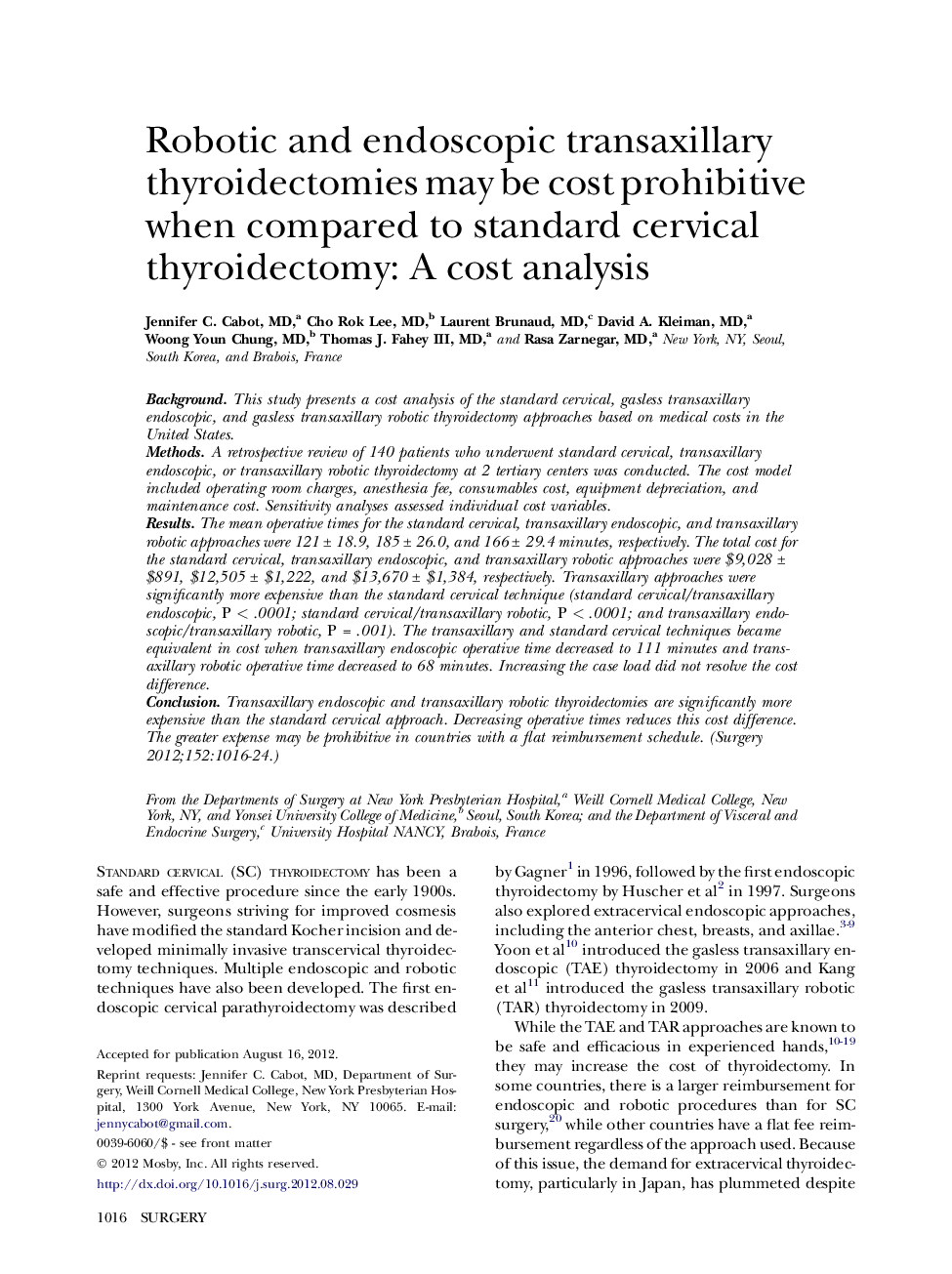| Article ID | Journal | Published Year | Pages | File Type |
|---|---|---|---|---|
| 4307719 | Surgery | 2012 | 9 Pages |
BackgroundThis study presents a cost analysis of the standard cervical, gasless transaxillary endoscopic, and gasless transaxillary robotic thyroidectomy approaches based on medical costs in the United States.MethodsA retrospective review of 140 patients who underwent standard cervical, transaxillary endoscopic, or transaxillary robotic thyroidectomy at 2 tertiary centers was conducted. The cost model included operating room charges, anesthesia fee, consumables cost, equipment depreciation, and maintenance cost. Sensitivity analyses assessed individual cost variables.ResultsThe mean operative times for the standard cervical, transaxillary endoscopic, and transaxillary robotic approaches were 121 ± 18.9, 185 ± 26.0, and 166 ± 29.4 minutes, respectively. The total cost for the standard cervical, transaxillary endoscopic, and transaxillary robotic approaches were $9,028 ± $891, $12,505 ± $1,222, and $13,670 ± $1,384, respectively. Transaxillary approaches were significantly more expensive than the standard cervical technique (standard cervical/transaxillary endoscopic, P < .0001; standard cervical/transaxillary robotic, P < .0001; and transaxillary endoscopic/transaxillary robotic, P = .001). The transaxillary and standard cervical techniques became equivalent in cost when transaxillary endoscopic operative time decreased to 111 minutes and transaxillary robotic operative time decreased to 68 minutes. Increasing the case load did not resolve the cost difference.ConclusionTransaxillary endoscopic and transaxillary robotic thyroidectomies are significantly more expensive than the standard cervical approach. Decreasing operative times reduces this cost difference. The greater expense may be prohibitive in countries with a flat reimbursement schedule.
